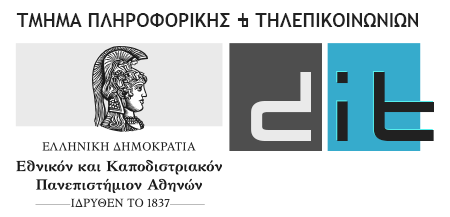Προσκεκλημένη ομιλία που θα πραγματοποιηθεί την Παρασκευή 14/10/2022, ώρα 12:30, στο Τμήμα Πληροφορικής & Τηλεπικοινωνιών - αίθουσα Α56.
Speaker: Dr Stavros Diolatzis, GraphDeco, INRIA Sophia Antipolis, France
Title: Learning Radiance Fields: From Global Illumination to Generative Models
Abstract: Creating realistic images of virtual scenes is a process that involves simulating light interactions, traditionally through path tracing and Monte Carlo methods, as light gets transmitted and reflected before reaching the virtual camera.This process is being used extensively in different industries such as movies, video games, physical simulations and architectural design. Monte Carlo methods, in a path tracing context, can handle complex lighting effects but the resulting images are plagued with noise which is reduced by simulating additional paths. This can be computationally expensive and a lot of research has gone into making it more efficient and accurate.
